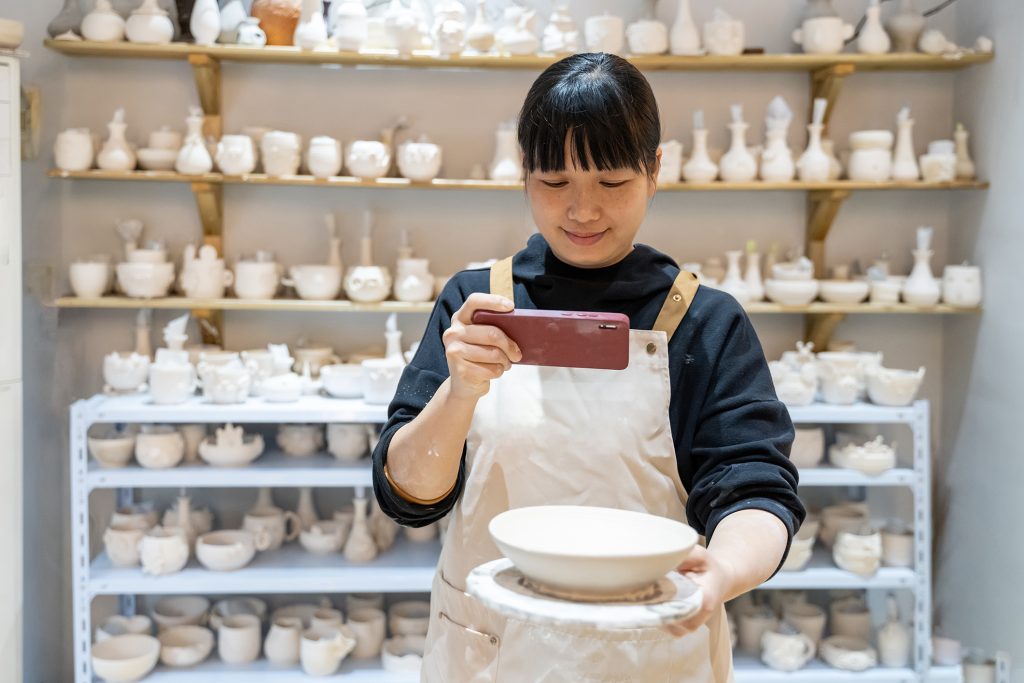
By Jerry Zhu and Tianyi Ma
Neo-Chinese style has surged to the forefront of contemporary trends, blending tradition with modernism in a way that captivates both domestic and international audiences. In this blog, we explore how Neo-Chinese style can translate into creative thinking that influences product development and business processes, creating opportunities for a Neo-Chinese business model.
The global rise of Chinese culture is tied to the nation’s economic powerhouse status. Historically, significant economic influence often precedes cultural proliferation. Post-World War II, American cultural exports dominated, globally popularizing fast food and Hollywood films.
Asia, propelled by its economic success, has also left a lasting cultural mark. The worldwide proliferation of Japanese electronic brands led to the popularity of anime and Japanese cuisine beginning in the 1970s. The rise of Korean culture followed a similar trajectory after the international growth of brands like Samsung, LG and Hyundai.
Now, the Chinese nation’s 5,000-year-old cultural heritage is also gaining international recognition as China’s high-tech products – high-speed trains, ships and electric vehicles – are exported globally. Chinese art, traditional medicine and the language have also gained worldwide interest.
Neo-Chinese Style: A Domestic Revival with Global Appeal
The Neo-Chinese trend began within China, the world’s second-largest economy, through contemporary modes of cultural appreciation. Young people flock to museums to celebrate their ancestral achievements, and workers joke about adopting Zen philosophy as part of a modern work-life balance.
Internationally, Neo-Chinese style has gained traction, characterized by a blend of traditional elements with contemporary design sensibilities. This style emphasizes subtlety, elegance and the strategic use of negative space, allowing for imaginative interpretations.
Neo-Chinese style is more than a superficial application of Chinese elements; it is a sophisticated integration of cultural aesthetics with modern design principles. It captures the soul of Chinese design, with its understated elegance and profound beauty.
Neo-Chinese Innovations in the Domestic Market
Cheongsams, Hanfu, silk and embroidery are all elements of traditional Chinese attire experiencing a renaissance. Unifying these elements for modern consumers demands a high level of aesthetic sensibility and craftsmanship.
The luxury apparel brand Tangxindan is a successful model of Neo-Chinese style. Founded by three visionary entrepreneurs, Tangxindan combines traditional gold and silver embroidery with current fashion trends. Its designs are wearable art – understated yet elegant, suitable for daily wear and formal occasions. Tangxindan endorses Dilraba Dilmurat with its cheongsams and she highlights its contemporary appeal.
Tangxindan represents the emerging direction of Chinese luxury brands: merging traditional aesthetics with Western flair, while preserving craftsmanship and continuing to innovate.
International Brands Incorporating Neo-Chinese Innovation
Many international brands have added Chinese elements to their products, with some success. Other attempts appear out of place or comical to Chinese consumers, especially those incorporating dragon motifs and other stereotypical elements.
To resonate with consumers across cultures, adopting Neo-Chinese style requires a genuine appreciation for Chinese aesthetics and culture. The Spanish luxury brand Loewe stands out in this regard by highlighting the beauty of Chinese monochrome glazes in a sophisticated and sincere homage to Chinese culture.
Loewe’s campaign featured an exhibition of monochrome ceramics in its stores, short films on ceramic-making and a collaboration with Jingdezhen Ceramic University. This deep engagement with Chinese culture was both commercially successful and culturally respectful. Observers commented that it was rare and commendable for a European brand to engage so deeply with Chinese aesthetics.
Storytelling Mastery in Alignment with Neo-Chinese Innovation
Tongshifu, specializing in pure copper ornaments and accessories, is another exemplary Neo-Chinese brand. Its commitment to craftsmanship and traditional techniques sets it apart, while its blend of traditional design with modern techniques and packaging embodies the fusion of heritage and contemporary Chinese culture.
The brand’s marketing campaigns highlight the stories behind the craft, educating consumers about the lost-wax casting method and the nuances of brass and copper. Featuring designers alongside their creations, Tongshifu’s campaigns showcase respect for the artisans’ expertise.
Beyond Aesthetic Sense: Neo-Chinese Style in Business Strategy
Neo-Chinese style transcends aesthetics: it embodies a cultural and business philosophy. Mass-produced Neo-Chinese-themed products once filled museum gift shops, but discerning consumers now seek quality and authenticity. Without a strong brand or quality assurance, Neo-Chinese aesthetic artistry alone will not attract today’s customers.
KFC’s success in China illustrates this principle. Unlike other Western chains, KFC excels in localizing and developing Neo-Chinese cuisine. In fact, KFC in China is barely recognizable as a foreign brand: its outlets serve traditional Chinese breakfast items like youtiao (dough fritters) and congee, mirroring the menus at local eateries. This strategy of combining local flavors with consistent quality and service highlights the brand’s innovative approach to cultural adaptation and secures its popularity with Chinese consumers.
From design to business models and storytelling to long-term commitment – brands are leveraging Neo-Chinese style for business impact. Contact us to explore how your brand can build relevance in China through cultural adaptation and inspiration.
Jerry is the managing director of Allison in China, the world’s second largest economy. He oversees the agency’s offices in Beijing, Shanghai, Chengdu and Tianjin. With over 20 years of public relations experience, Jerry is a recognized expert in corporate communications, and has provided crisis communications counsel to clients across the public and private sectors.
Tianyi, Vice President (Consumer & Corporate) at Allison Beijing, has extensive experience in consumer and corporate communication across Hong Kong and mainland China. She excels in campaign planning and execution, corporate and digital communication, and brand and fashion trend analysis, with a particular focus on the fashion, lifestyle, technology, and luxury sectors.